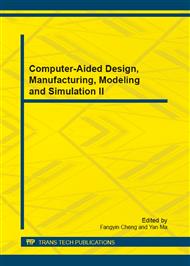p.428
p.433
p.441
p.446
p.451
p.456
p.461
p.466
p.472
Prediction of Braking Force under Ship-Tugboat Interaction
Abstract:
It is inevitable that the wake affects on the braking force of tugboat towing in the stern of a ship. In order to understand the effect of ship-tugboat interaction on the braking force of tugboat, we have to consider two interference components, namely on the tugboat’s braking force in ships wake and on ship’s hull resistance. First, the interference component on the tugboat’s braking force is predicted considering the scale effect of ship’s wake velocity distribution, and using the braking force coefficient of tugboat-self in the uniform flow[1]. Then the interference component on ship’s hull resistance is also estimated under an assumption, which this component in full scale ship is in proportion to Schlichting’s frictional resistance as the component obtained in scale model experiments being a constant. Finally, the effective braking force for full scale tugboats was predicted by using the experiment data and the assumptions mentioned above.
Info:
Periodical:
Pages:
451-455
Citation:
Online since:
December 2012
Authors:
Keywords:
Price:
Сopyright:
© 2013 Trans Tech Publications Ltd. All Rights Reserved
Share:
Citation:


